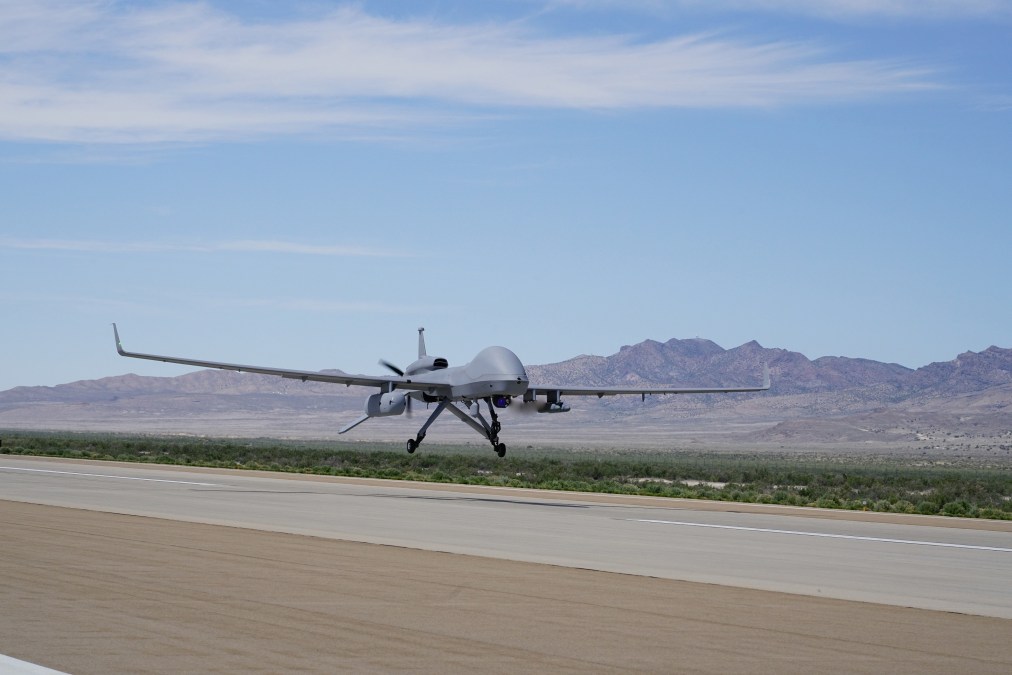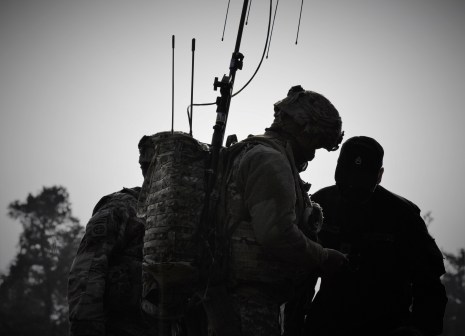Army experimenting with new platforms for aerial jamming pod

AUGUSTA, Ga. — After getting procurement dollars added back that were zeroed out in the previous year, the Army is now looking at potential changes to its forthcoming aerial electronic jamming pod.
The Multi-Function Electronic Warfare-Air Large is a pod capable of serving as the first brigade-organic airborne electronic attack asset and providing limited cyberattack.
Until recently, it was to be mounted to an MQ-1C Gray Eagle drone. However, the Army is now experimenting with mounting it to other airborne platforms with other units and environments.
“Before we run to procurement, we’ve got to get through tests here,” Mark Kitz, program executive officer for intelligence, electronic warfare and sensors, told FedScoop in an interview at AFCEA’s TechNet Augusta conference. “Over the next 12 months with [Director Operational Test and Evaluation] and [Army Test and Evaluation Command], we are setting up an environment that will robustly test the pod and so we can characterize and understand what environments it could be affected in.”
Officials have previously noted the requirements could change, but have not articulated in what way or what types of platforms the pod could be mounted aboard.
Kitz said they’ll be testing the pod on a Beechcraft RC-12 Guardrail and a platform similar to the High Accuracy Detection and Exploitation System, or HADES — a jet that is part of the Army’s overall plan to modernize aerial intelligence systems.
“We’re in the evaluation of that and we really want to characterize the system and understand,” he said. “Threats are very different. Go to INDOPACOM versus CENTCOM versus what we’re seeing in Ukraine, the threats look very different. How resilient is this capability to those diverse threat environments? That’s what we really want to characterize over the next year.”
The 2022 budget saw a cut in what previous budget plans had forecasted would be $12 million in procurement. The Army added back $3 million for MFEW in its fiscal 2023 budget request.
MFEW was also initially targeted to be used by combat aviation brigades, but Kitz said that is up for evaluation as well. The Multi-Domain Task Force is interested in the capability.
“We’re keeping an open mind as to what operations it could potentially affect,” he said. “We haven’t delivered EW effects from the air in a long time. We’re trying to use this prototype, use this testing environment so that we can learn about the capability and then learn how the commanders can use it to their best employment.”
The Army tested the capability at EDGE22, an aerially focused experiment in April and May, and is expecting to test it at Project Convergence 22 later this year.
“It also gives us this opportunity to characterize the system and for us to run experiments like at Edge 22, like at PC 22, and so we’ll be able to really understand is it best on an RC-12 with an MDTF where they can get standoff in INDOPACOM on a platform they’re going to fly anyway or is it a Gray Eagle with standoff in Europe,” Kitz said. “These are all options that we’re evaluating.”






